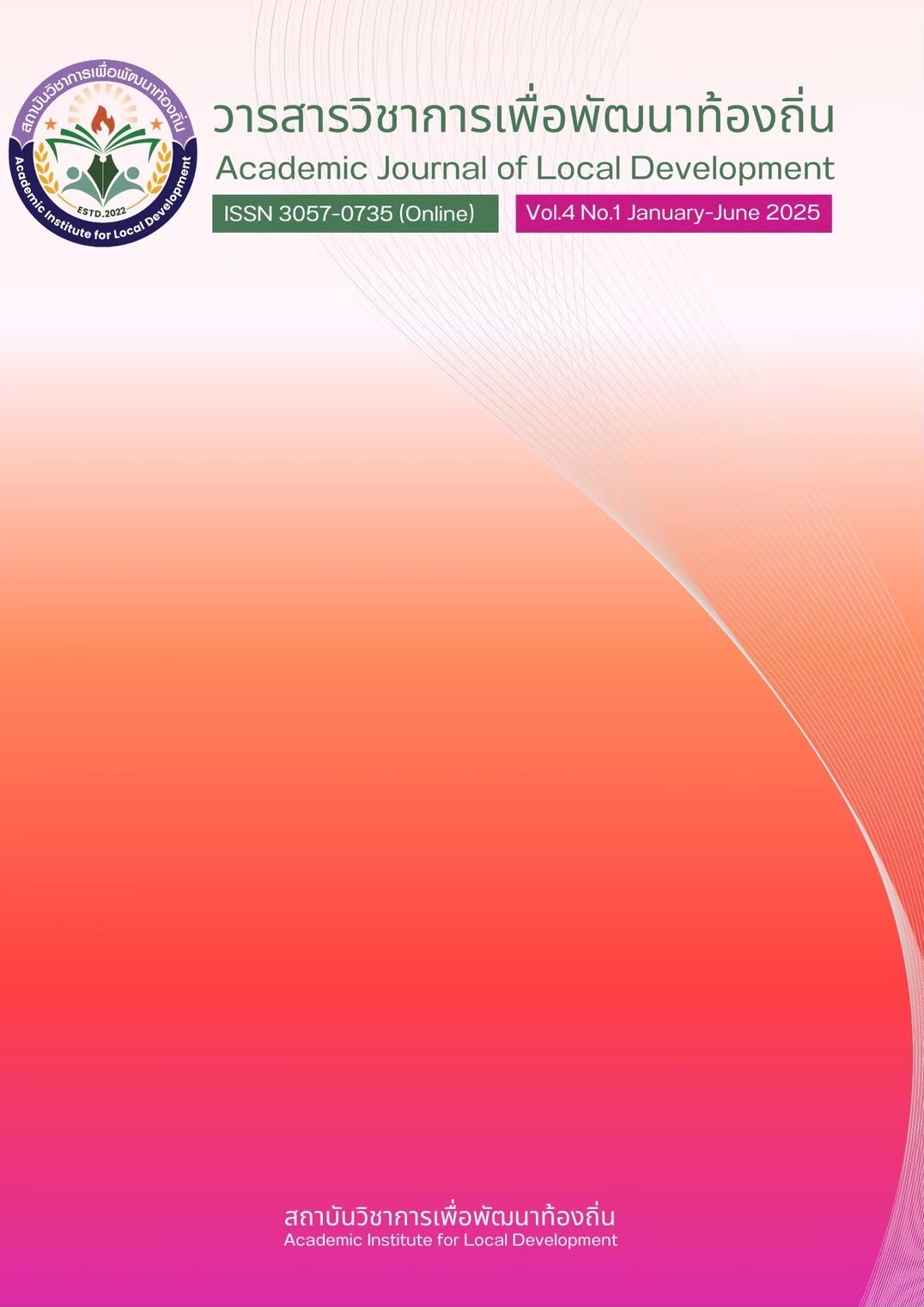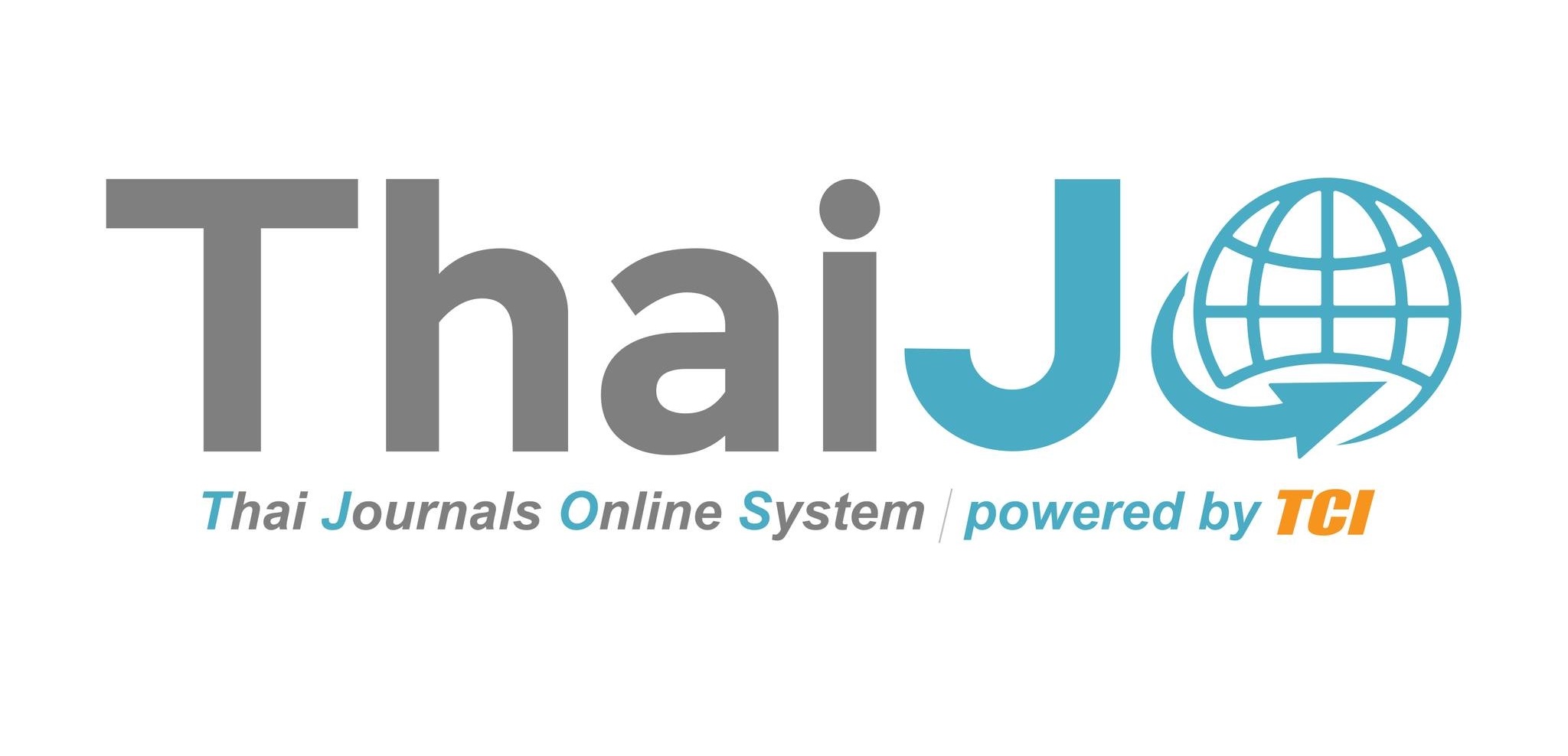Innovation in the Development of Processed Products from Native Chicken to Create a High-Value Circular Economy in Chaiyaphum Province.
DOI:
https://doi.org/10.14456/ajld.2025.2Keywords:
Innovation, Product development, Native chicken, High-value circular economyAbstract
This research aims to 1) transfer knowledge on innovation in developing processed products from native chicken to create a high-value circular economy, 2) study the process of processing food products from native chicken to create a high-value circular economy. This research is a mixed-method research with participatory action research and quantitative methods to assess satisfaction and knowledge utilization. The sample group is a community enterprise group of native chickens in Sompoi Subdistrict, 50 people, using purposive selection.
The research instruments are questionnaires, structured interviews, and group discussion records. Quantitative data analysis uses statistics, percentages, means, and standard deviations, and qualitative data analysis uses content analysis. The research results found that 1) The situation of native chicken farming in the area found that the Sompoi Native Chicken Community Enterprise Group 1 has 50 members. The conditions are that all members improve the chicken coop to meet the standards and apply for certification of farms with appropriate animal protection and care systems, or GFM. All members must vaccinate their chickens every 3 months, with the livestock department of Chaturas District providing the vaccine. In addition, members must provide 10-20 good-looking hens to produce chicks weighing 1.2-1.5 kilograms for sale. Set up a central pen to collect chickens from members to deliver to the market. Chickens will be collected and delivered to the market from the beginning of 2020. 2) Native chicken product processing process is carried out by organizing a workshop to transfer knowledge on innovation in developing processed native chicken products to create a high-value circular economy by lecturers with both academic and practical experience, including lecturers from Chaiyaphum Rajabhat University, Chaturas District Livestock Officer, Director of Ban Mai Nadi Native Chicken Farming School, owner of Aun Kai Farm, Nong Bua Daeng District, practitioners and those who have succeeded in raising native chickens for business. The knowledge transferred includes herbal clay pot baked chicken products, shredded chicken products, and ready-to-cook minced chicken products.
References
จิโรจน์ ตั้งสกุล. (2547). ภูมิปัญญาชาวบ้านกับการพัฒนาเศรษฐกิจชุมชน: ศึกษากรณีเครื่องทองลงหินชุมชนประดิษฐ์โทรสาร เขตจัตุจักร กรุงเทพมหานคร [วิทยานิพนธ์ปริญญามหาบัณฑิต]. มหาวิทยาลัยราชภัฏจันทรเกษม.
ฉัตรณรงค์ศักดิ์ สุธรรมดี. (2564). คู่มือพัฒนาไก่พื้นเมือง อำเภอจัตุรัส จังหวัดชัยภูมิ (รายงานการวิจัยฉบับสมบูรณ์). คณะรัฐศาสตร์ มหาวิทยาลัยราชภัฏชัยภูมิ.
ฉัตรณรงค์ศักดิ์ สุธรรมดี, และคณะ. (2559). การเพาะเลี้ยงและพัฒนาไก่ชนเพื่อการพาณิชย์ในพื้นที่จังหวัดชัยภูมิ (รายงานการวิจัยฉบับสมบูรณ์). สถาบันวิจัยและพัฒนา มหาวิทยาลัยราชภัฏชัยภูมิ.
ณัฐพงศ์ พัชรไพลิน. (2565). การบรรยายถ่ายทอดองค์ความรู้เกี่ยวกับการพัฒนาการตลาดไก่พื้นเมืองในจังหวัดชัยภูมิ. ปศุสัตว์อำเภอจัตุรัส จังหวัดชัยภูมิ.
ประมุข ศรีชัยวงษ์. (2563). การบรรยายถ่ายทอดองค์ความรู้เกี่ยวกับการพัฒนาศักยภาพการเพาะเลี้ยงและพัฒนาไก่พื้นเมือง. มหาวิทยาลัยราชภัฏชัยภูมิ.
มาริสา โกเศยะโยธิน. (2546). องค์ความรู้และการถ่ายทอดภูมิปัญญาพื้นบ้านในการทำนาข้าวด้วยวิธีเกษตรธรรมชาติ จังหวัดสุพรรณบุรี. กรุงเทพฯ: กระทรวงศึกษาธิการ.
อเนก วารีรักษ์. (2545). การดำเนินงานของธุรกิจไก่พันธุ์พื้นเมืองลูกผสมในเขตอำเภอกมลาไสย จังหวัดกาฬสินธุ์ (รายงานการศึกษาปัญหาพิเศษ บธ.ม.). มหาวิทยาลัยมหาสารคาม.
อัษฐพล ปริยวงศ์สกุล. (2542). ธุรกิจเลี้ยงไก่พื้นเมือง: กรณีศึกษาบ้านหนองโข่ย ตำบลท่าพระ อำเภอเมือง จังหวัดขอนแก่น (รายงานการศึกษาปัญหาพิเศษ บธ.ม.). มหาวิทยาลัยมหาสารคาม.
สำนักงานสภาพัฒนาการเศรษฐกิจและสังคมแห่งชาติ. (2566). แผนพัฒนาภาคตะวันออกเฉียงเหนือ พ.ศ. 2566–2567. http://www.osmnortheast-s2.moi.go.th
Downloads
Published
How to Cite
Issue
Section
Categories
License
Copyright (c) 2025 Academic Journal of Local Development

This work is licensed under a Creative Commons Attribution-NonCommercial-NoDerivatives 4.0 International License.












